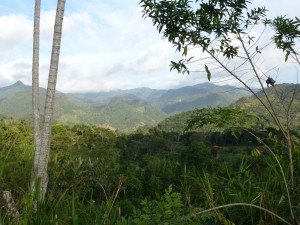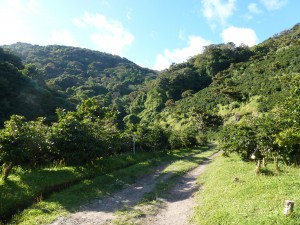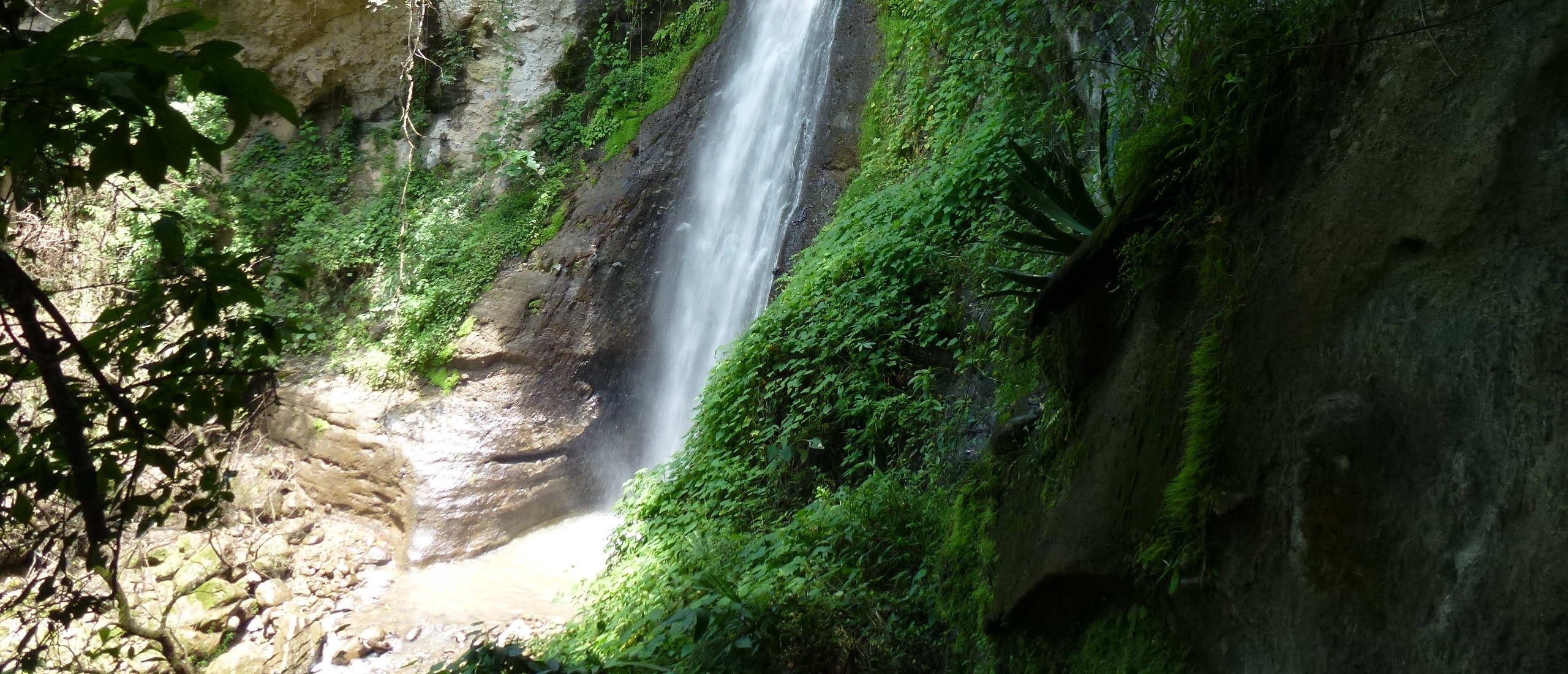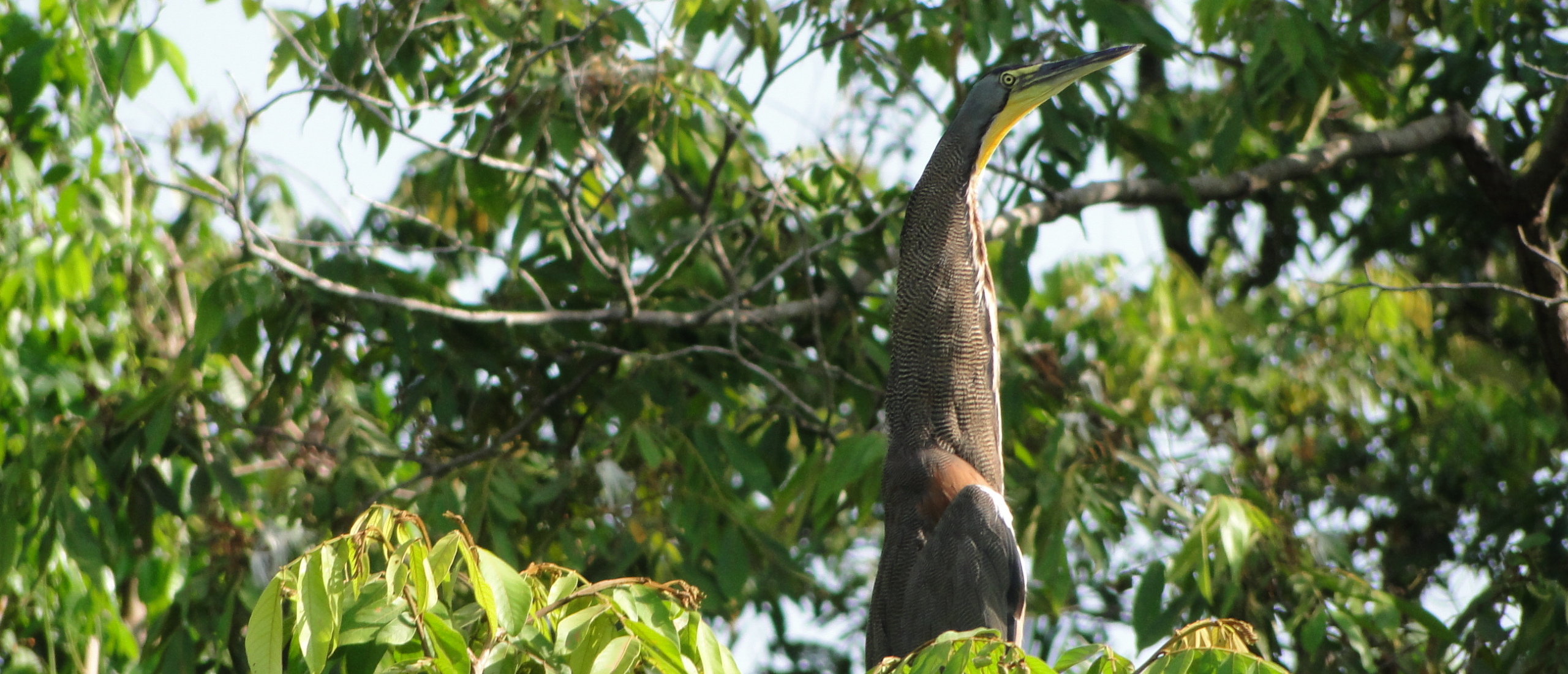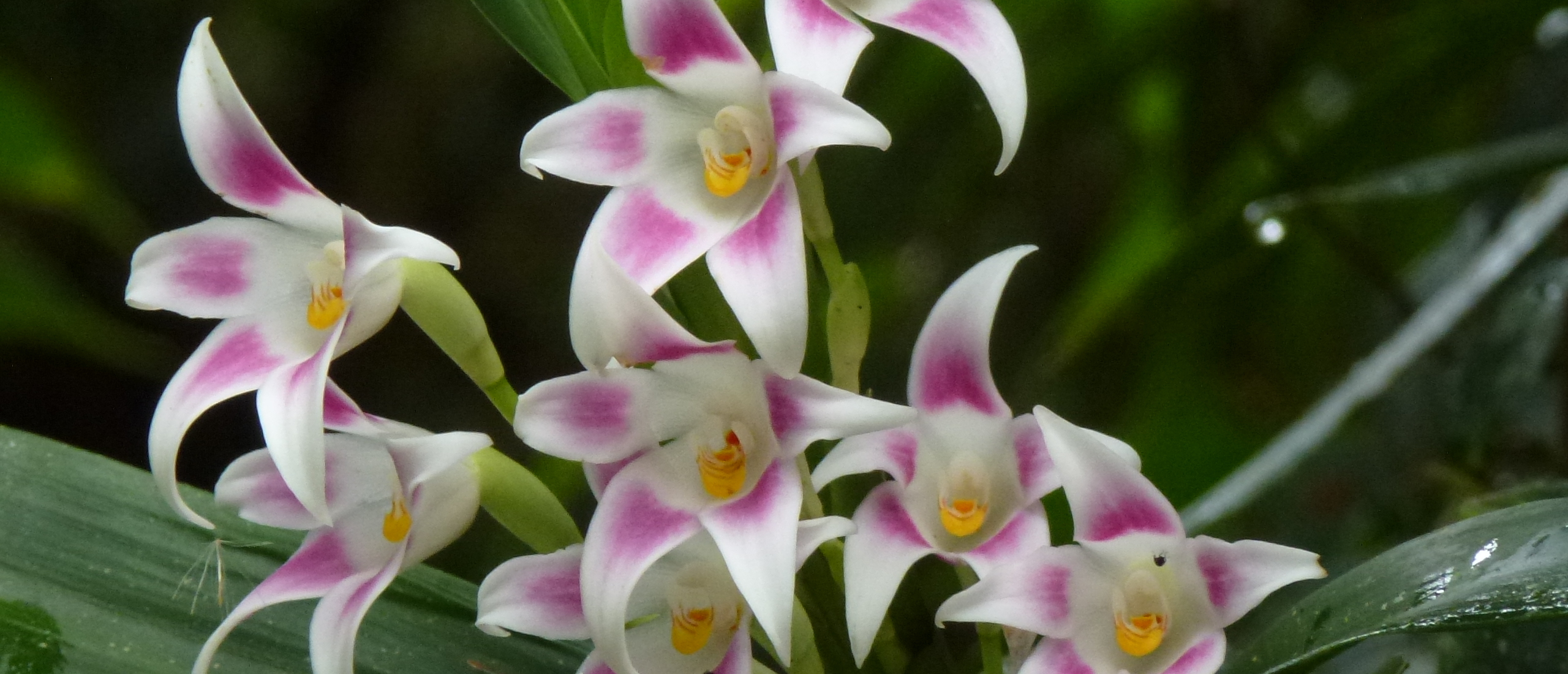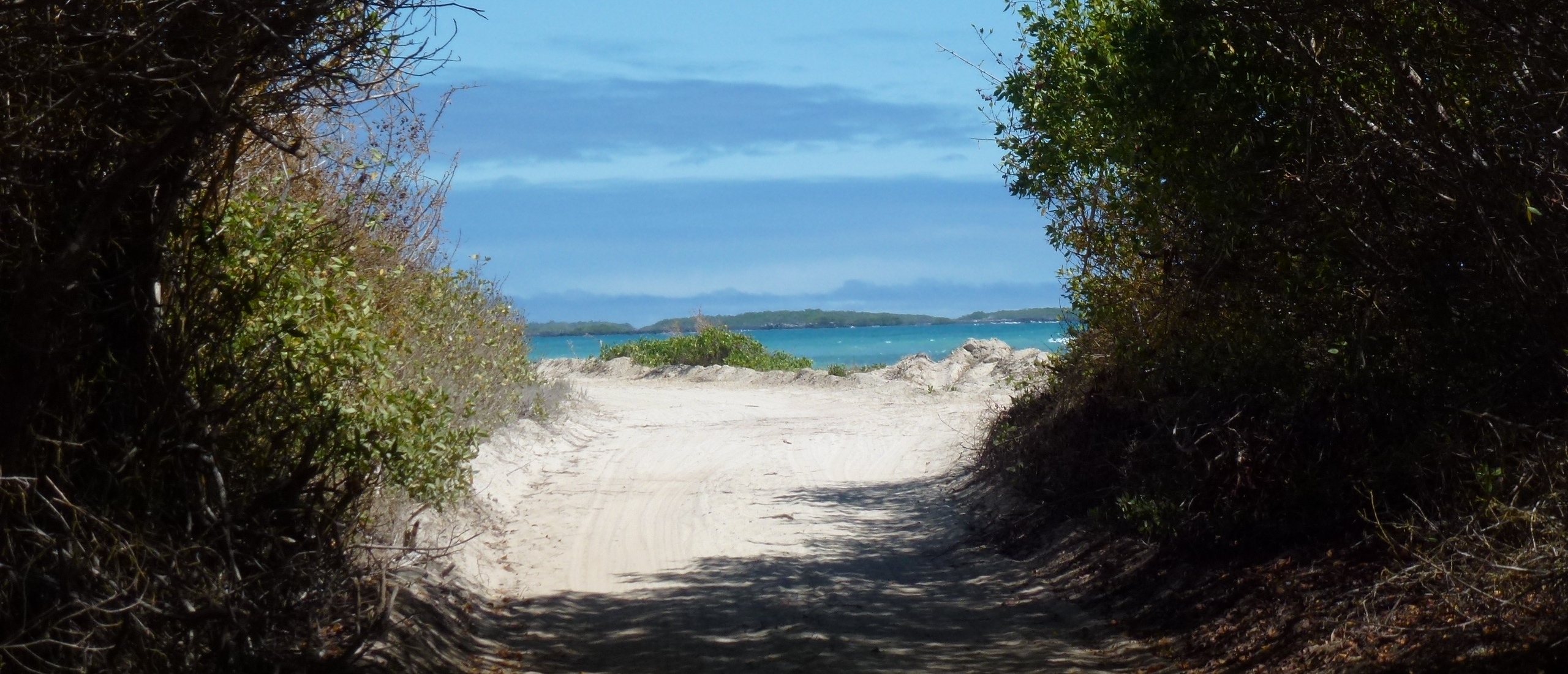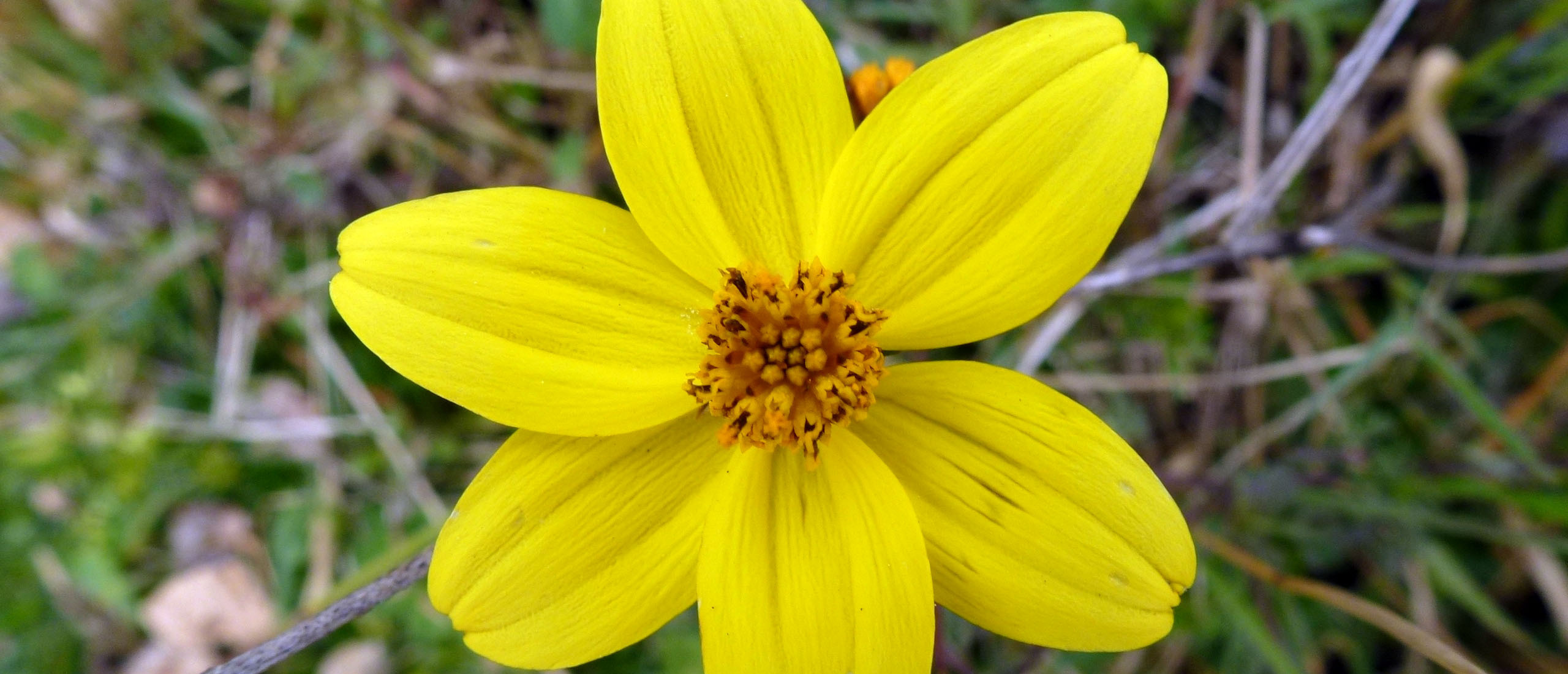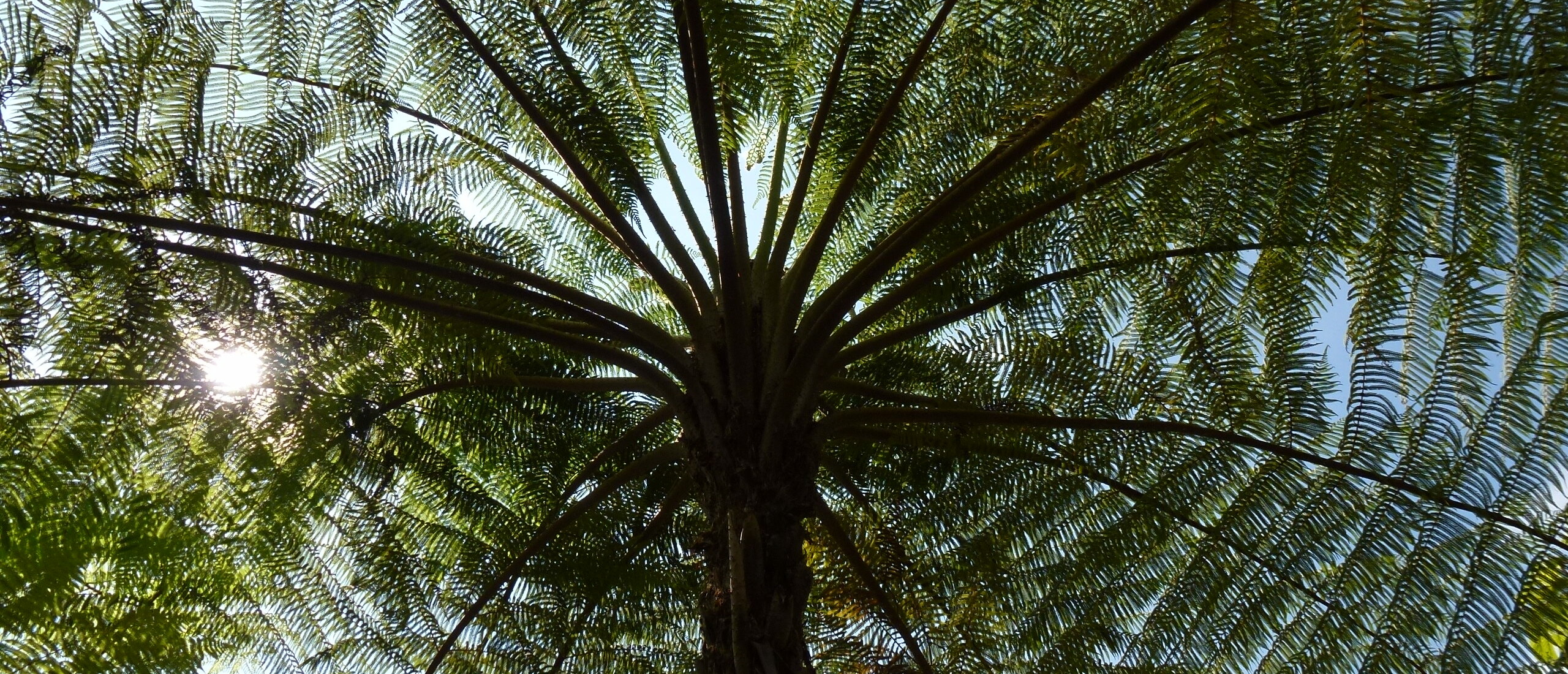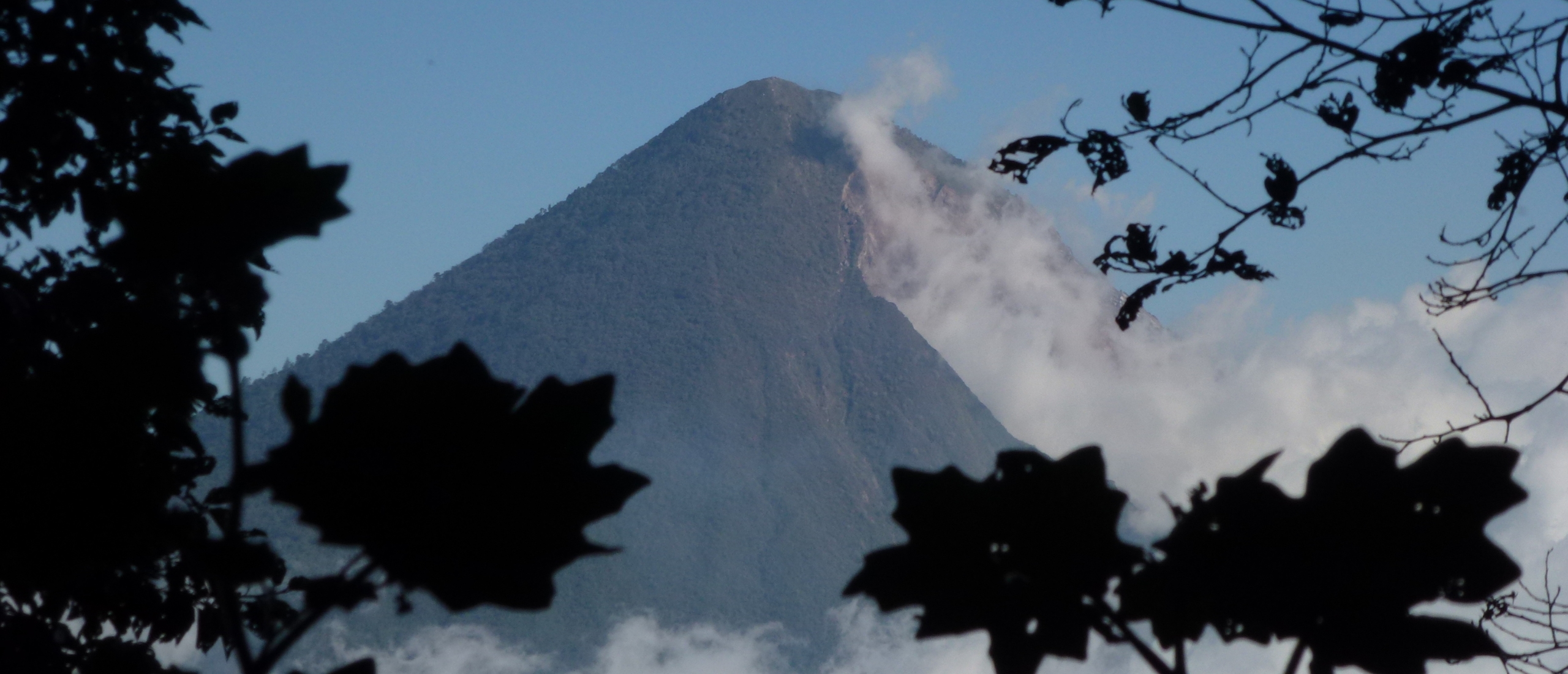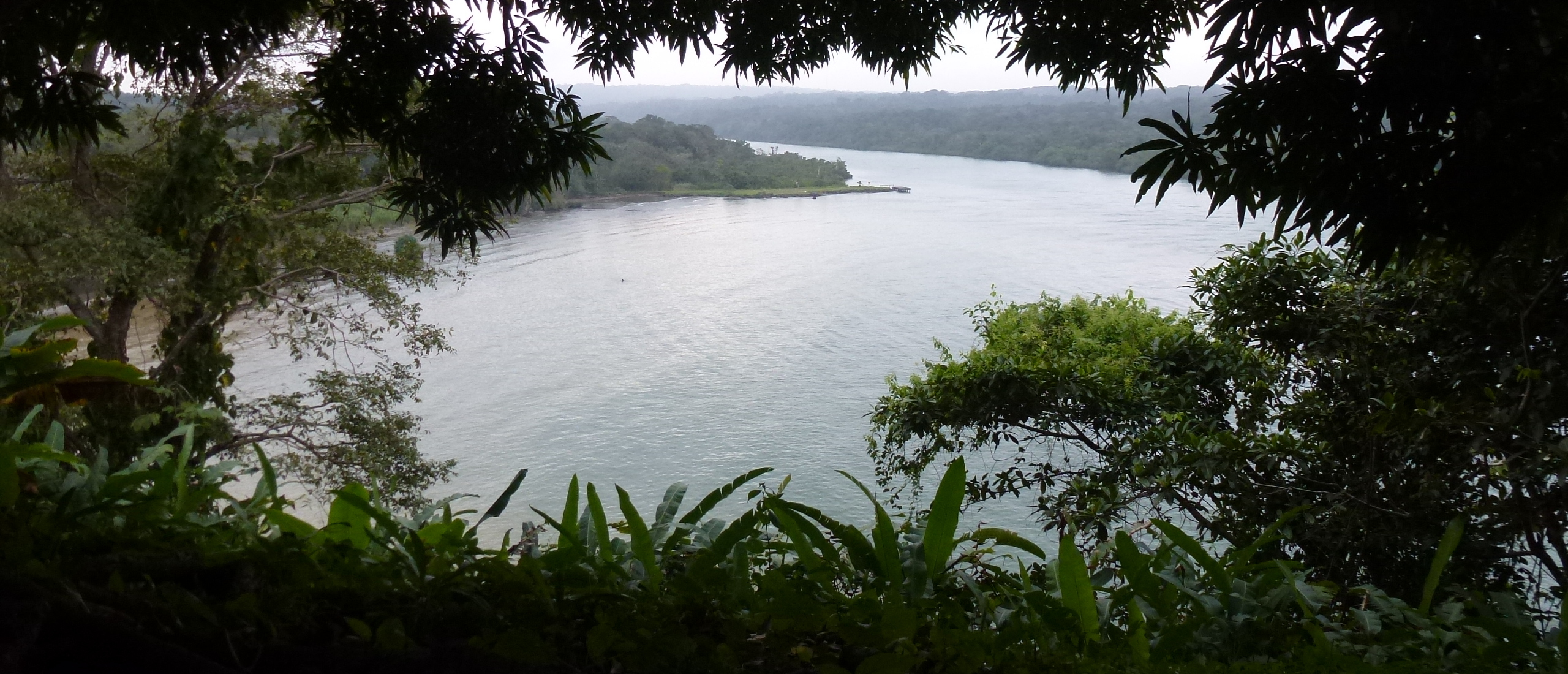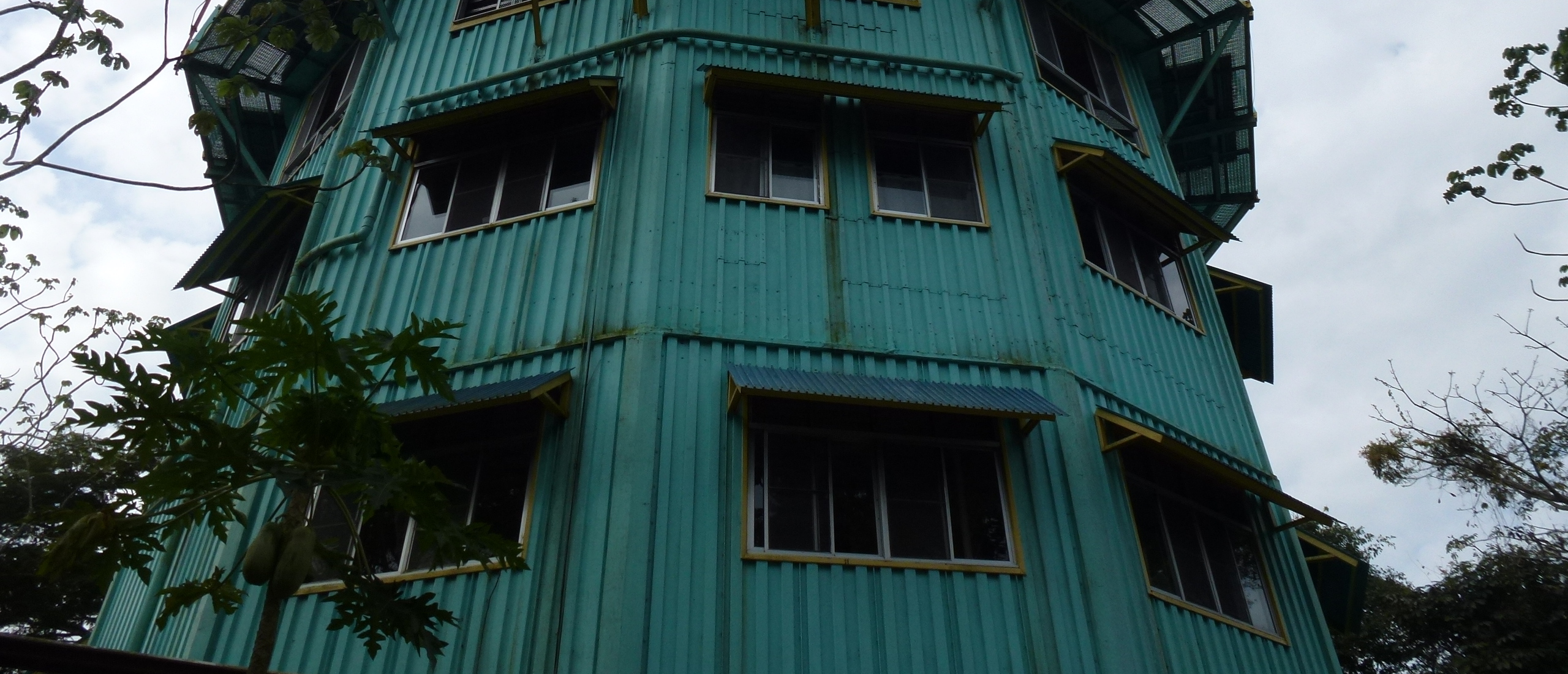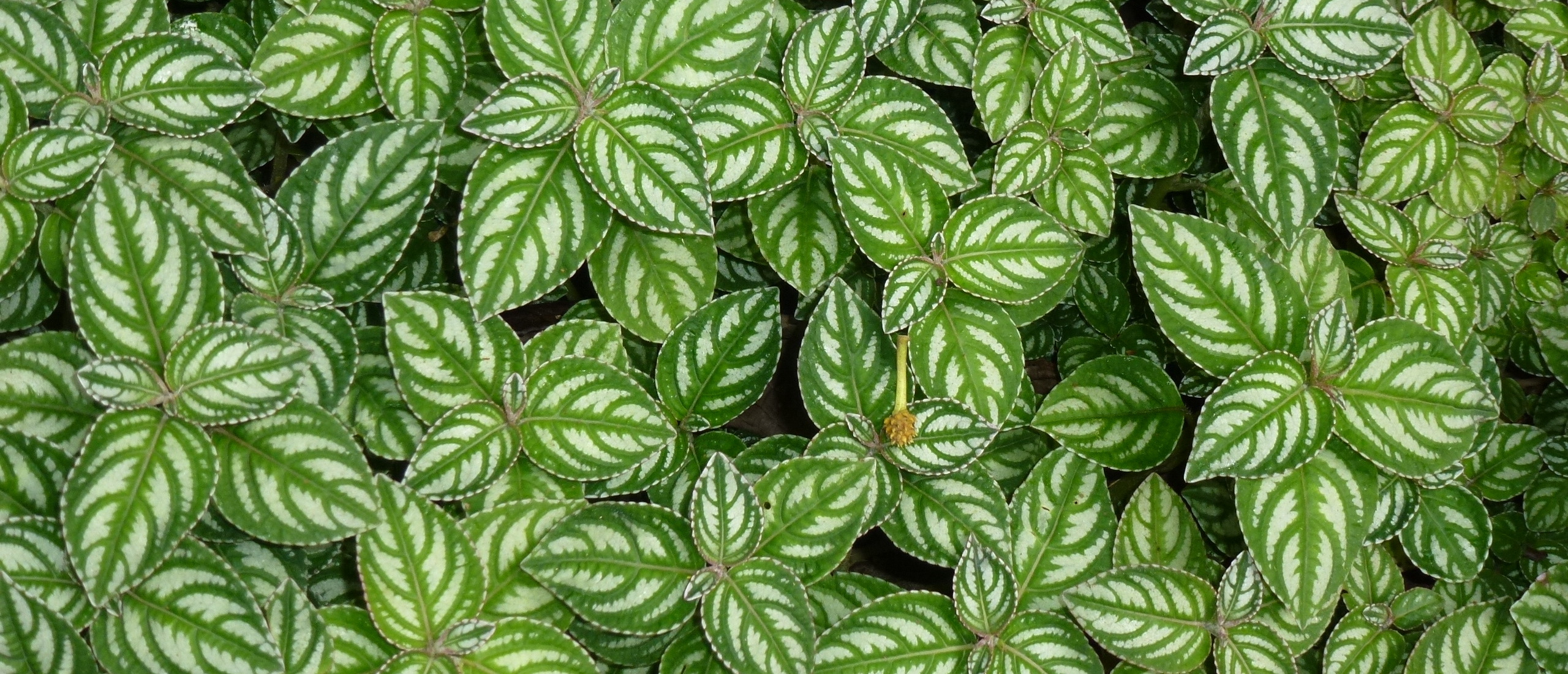
Boquete, Chiriquí – back in the footsteps of GCC We finally departed the Canal Zone on Tuesday 27th, and drove a long way westwards along the Interamerican Highway, which was of a relatively high standard, although as it is mainly built of concrete, the ride in our Fiat Panda was a little bumpy – but maybe we should not complain as it took my great grandfather George Charles Champion (“GCC”) four days in a very uncomfortable coastal trading boat to complete the journey from Panama City to David, in the westernmost province of Panama, Chiriquí…overland travel was almost impossible back then. We could not face the entire drive in one day, and consequently we turned off the main highway about halfway to David, at Santiago, and drove 52 kms northwards, climbing into the hills until we reached the mountain village of Santa Fé, where we checked into the imaginatively named Hotel Santa Fé. Although whoever had been responsible for the painting and decorating in this establishment could definitely have done with a little extra training, the welcome we received from our host, Les, and the excellent, and genuinely Panamanian, cuisine was a welcome change from the international fare we had sampled up to this point. That evening we explored the backroads around the village, without much success on the bird front, although a cooperative Amazon Kingfisher we were able to observe from the Puente Bulaba was an exception.
The following morning we were up and ready for our bird walk with guide César, who appeared at the hotel at 06.00 AM. After a short drive uphill to the settlement of Alto de Piedra, we left the car and began our walk up into the forest. The weather was not very cooperative – an incredibly strong wind, low cloud and intermittent rain, not ideal birding conditions. However, we did soon see two species of toucan, Keel-billed and Collared Aracari. At first the walk was along a muddy track, where I was glad of the wellington/gum-boots I had bought the evening before in the Chinese supermarket in Santa Fé (made in Guatemala!) – getting a smile out of the sales girl in that shop was more than I could manage! César then led us off the track into the forest, and we stumbled over tree roots, plunged down ravines, ploughed through waist-high grass (I was expecting another chigger attack but luckily none came), and hardly saw anything at all. We did manage, with great difficulty, to catch a few fleeting glimpses of a Dull-mantled Antbird at one point, but finally, with the rain setting in in earnest, we headed back to where we had left the car, outside a very windswept café. We nipped in for a quick coffee to warm us up (what a luxury after boiling Panama City and Canal Zone!), but were distressed to find that the manager and a teenage boy were already pretty well inebriated on aguardiente, the local firewater, although it was only 11.00 AM. Yesterday we headed back down to the main road, and continued on our way towards Chiriquí. The road west of Santiago passes through some incredibly sparsely populated areas of dry woodland and open savannah, and we hardly saw a settlement in perhaps an hour of driving along the highway. However, eventually we entered the province of Chiriquí, and almost immediately found ourselves back on the trail of GCC. We turned off the road to visit the small town of Tolé, where George had his money stolen from his saddle bag on 20th January, 1883, as he recounts in a letter to his mother: In this trip have had to rough it a good deal, had various casualties - money stolen, sick for a few days (the boy also) and, still, I got back again all right, in spite of all my troubles. Although I have come to sympathise greatly with GCC, and to admire his tenacity in enduring the incredible hardships he experienced during his four years in Central America, I find it a pity that he could not write with more passion...he must have experienced so many adventures, and yet his letters are far more filled with mundane daily affairs than descriptions of exciting events...perhaps he did not want to worry his mother, or perhaps he was a dry scientist who was not open to adventures – some people just are not: as one of his grandsons once said when asked by one of my aunts, “What adventures have you had recently?”, the crushing answer came: “I do not have adventures.” Our route continued precisely along his routes, passing by Nancito, San Felix, Remedios and San Lorenzo, until we turned inland towards the mountains, eventually arriving at the tiny village of Caldera, all places where GCC had stayed in 1883. On such a short visit, it is hard to locate the precise houses in which he stayed, especially as we were unable to find any old buildings at all; they were probably constructed of adobe or wood, and have been superseded by more modern buildings since. We do know from his diaries that he stayed with a very hospitable family of Swiss settlers in Caldera, named Buergi, and if I revisit for a longer period in the future, I shall certainly try to track this family down.
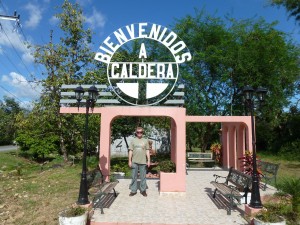 Self at the village of Caldera
Self at the village of Caldera
From Caldera our route took us to the north-west, heading ever closer to the towering bulk of the 3475 m high Volcán Barú, known in my great grandfather’s day simply as Volcán Chiriquí. This mountain, unlike the dramatically cone-shaped volcanoes I have become used to in Guatemala, has several peaks and looks more like the collapsed remains of a once even higher summit, but it nonetheless impresses in its shear bulk. We finally reached the mountain town of Boquete, where we checked into our hotel, the Lacha Country Inn, and so ended the day.
This morning we drove up out of the town, heading for the entrance of the Parque Nacional Volcán Barú, and on the way we ambled our way along a narrow road that snaked its way through open woodland and coffee plantations, running along a fast-flowing river, on whose boulders we were able to locate two of the three species of birds that are specifically adapted to such conditions, the Black Phoebe and the delightfully-named Torrent Tyrannulet, both member of the New World flycatcher family. Once we had arrived at the national park office, we left the car and headed further on foot, entering cloud forest along the Sendero de los Quetzales, a trail that snakes over a series of ridges on the north side of the volcano, eventually emerging at Cerro Punta, where we intend to stay from 1st January for a few days. Although we did not manage to see a Resplendent Quetzal, thought by some to be the most beautiful bird in the World (and which I have been lucky enough to encounter in both Costa Rica and Guatemala), we did add quite a number of birds to the list, including the third of the three rushing water specialists, the American Dipper. Unlike the Eurasian Dipper, which is dark brown with a prominent white throat, this bird is all lightish grey, but it has exactly the same habits, constantly dipping up and down before plunging into the torrent to search for aquatic insects or small fish. I was particularly pleased to see this bird, as it was this species I had been hunting for with Peter and John Cahill back in Guatemala when I fell in the river, destroying my Nikon Coolpix 4500 camera, soaking my binoculars and various other items...and had failed to see the bird! Now, finally, here it was.
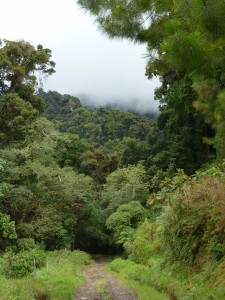 The Sendero de los Quetzales leads through lush cloud-forest
The Sendero de los Quetzales leads through lush cloud-forest
As well as several other interesting bird species, butterflies were flying. There was also quite a significant amount of bamboo, raising my hopes of finding the sister species of Drucina championi, my target in Guatemala for so long, Drucina leonata. Sadly this was not to be, but I have not given up hope as we shall be in the bamboo zone again several times in the coming days.
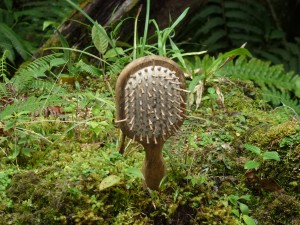 A remarkable "plant" we found by the trail - Brushia hairensis perhaps!
A remarkable "plant" we found by the trail - Brushia hairensis perhaps!
Walking in cloud forest is a real delight – it is so lush, with epiphytes, bromeliads, lianas and many other trappings of forest in the tropics, and yet the temperature is pleasant and there are far fewer biting insects, although in Santa Fé we were viciously attacked by tiny sandflies known here as chitras, which leave a horribly itchy red swelling for days after their attentions. George ascended on 6th to 8th June 1882 to over 8000 feet on the slopes of the volcano, following tracks made by tapirs through the dense undergrowth.
After we returned to the car, we drove a short distance to the Finca Lérida, a coffee farm high on the flanks of the volcano. Originally founded in 1900, this delightful place has diversified, opening a restaurant, where we enjoyed a very late lunch, and a very attractive hotel. But it was the gardens that particularly grabbed our attention, with its flowers attracting amazing numbers of hummers, including Green Violet-ear, Scintillant and Snowy-bellied Hummingbirds, and the truly charming Magenta-throated Woodstar (hummingbird names are so evocative!).


